From The Beatles to Billie Eilish: the 30 greatest concept albums

Every great rock band has at least one gloriously bonkers and pretentious record in them. Were it otherwise, the concept album – an LP whose songs all follow a narrative or unifying theme – wouldn’t exist. But it does exist, with everyone from Pink Floyd to Taylor Swift bringing their own fascinating perspective to the genre.
Not all concept records are created equal of course. Some are audacious and mind-expanding, others clearly flowing from an excess of ego, drugs and repeat viewings of 2001: A Space Odyssey. How to distinguish the brilliant from the unhinged? Cancel your appointments – that’s a joke, who has appointments any more? – and buckle up as we present the definitive top 30 of concept LPs.
30. The Antlers, Hospice, 2009
Concept records have traditionally been regarded as the preserve of shaggy prog bands. But indie rock has felt the genre’s pull, too. The Antler’s third LP tells the story of a hospice worker and a dying patient drawn into an “emotionally abusive relationship”. Powerful stuff but not many laughs (“walking in that room when you had tubes in your arms,” goes one chirruping lyric). Hospice is widely assumed to be autobiographical, though frontman Peter Silberman has refused to comment definitively. Either way, there’s no denying the power of an album that radiates the antiseptic chill of a hospital ward.
29. The Flaming Lips, Yoshimi Battles the Pink Robots, 2002
If there’s one thing pop music can always do with more of it’s marauding pink robots and a Japanese heroine – loosely based on Boredoms drummer Yoshimi P-We – trying to stop them taking over the planet. Such is the story behind the Flaming Lip’s most successful record. Cynics might say the real concept is that singer Wayne Coyne is a fan of Yusuf Islam / Cat Stevens. Islam was struck by the similarities between Father and Son and Yoshimi’s opening track Fight Test. He sought restitution and royalties from the song are now shared between him and the Flaming Lips.
28. Janelle Monáe, The ArchAndroid, 2010

R’n b star Monáe takes on the alter-ego of Cindi Mayweather, a “Platinum 9000” android mass-produced for the wealthy citizens of Metropolis. There’s a twist as – are you keeping up? – she falls in love with a billionaire and is sentenced to “disassembly” . On the run Cindi discovers her true identity as the ArchAndroid and sets out to topple the Great Divide, a shadowy operation devoted to stamping out “freedom and love”. A lot to take in: thank goodness, Monae’s cybernetic funk-pop is irresistible.
27. Dr Octagon, Dr. Octagonecologyst, 1996
Rapper Kool Keith and producer Dan the Automator join forces for a sci-fi horror in which the eponymous Dr. Octagonecologyst arrives on earth from a mysterious corner of the cosmos and achieves success both as medical doctor and pornographer. It’s a steep curve, but also one of the best known examples of hip hop tackling the concept record format.
26. David Bowie, Outside, 1995
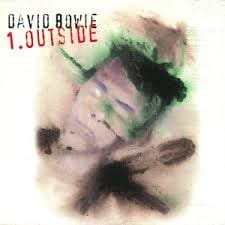
The LP that super-charged Bowie’s Nineties comeback, Outside – technically called 1.Outside – is a mystery set in an alternate history 1999 where the government is clamping down on “art crime”. We spend much of the record inside the head of main character, Nathan Adler. He’s a government agent whose job is to decide what is “art” and what is “awful”. If he’d been around for Tin Machine. Bowie would have been straight to the clinker.
25. Taylor Swift, 1989, 2016
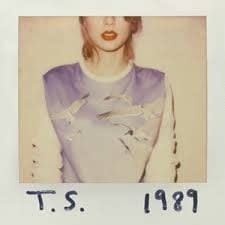
Wait, Swift’s first full-fledged pop record is also a concept album? That’s the belief of many Swift fans. According to this theory, 1989 chronicles a young woman coming of age, as she sets off for adventures in the big city (Welcome To New York), grows in confidence (Shake It Off) and suffers career and romantic highs and lows (Bad Blood, Wildest Dreams).
24. Green Day, American Idiot, 2004
Against the backdrop of the Iraq War, Green Day reinvented the rock opera for the punk generation. Billie Joe Armstrong, the band’s frontman, took inspiration from Pink Floyd’s The Wall and The Who’s Quadrophenia. He also immersed himself in Jesus Christ Superstar and the Rocky Horror Picture Show.
American Idiot relays the tale of a frustrated teenager, Jesus of Suburbia, raised on “soda pop and Ritalin”, who hates his small town and heads for the city. There, he crosses paths with St Jimmy, “a swaggering punk rock freedom fighter par excellence”. A Broadway musical expanded on the themes of alienation and dissatisfaction over politics in America post-September 11.
23. Jay Z, American Gangster, 2007

Ridley Scott’s gangster epic of the same name chronicled the true life rise of Harlem drugs lord Frank Lucas (Denzil Washington). Lucas was instrumental in introducing heroin to New York in the Sixties and the subsequent ravaging of African-American communities across the city.
The subject matter spoke to Jay Z, who had grown up dealing drugs in Brooklyn’s notorious Marcy Projects. He spun the accompanying soundtrack into a rumination on life and death on the wrong side of the tracks. His formative experiences were refracted through American Gangster’s music, which leaned heavily on the soul and funk that filled the streets through his childhood.
“It’s a New York City true story, you know,” said the rapper. “So as soon as the movie came on, it was like familiar, things that my pop seen and my uncles seen and, you know, different things like that, things I’ve seen growing up.”
22. The Pretty Things, S.F. Sorrow, 1968
Bowie adored the Pretty Things and may well have been envious of the streak of devil-may-care anarchy running through their music and, even more so, their live performances. Their crowning achievement was their 1968 rock opera about unlikely hero Sebastian F Sorrow. He is worn down by life until he learns to journey into his subconscious, where he enjoys a succession of fantastical adventures. There were whisperings that The Who were prompted to writing Tommy after hearing it, thought Pete Townshend and Roger Daltrey would always deny this.
S.F. Sorrow was based on a short story by Pretty Things frontman Philip May, who passed away in May 2020. It was not well received by their record label and suffered the misfortune of being released in November 1968, the same month as The Beatles’ White Album. Critics were baffled too. “An ultra-pretentious concept album, complete with strained 'story’,” wrote Lester Bangs in Rolling Stone. Still, time has been kind to it and the group performed S.F. Sorrow in its entirety to considerable acclaim in 2009. When May died the many tributes singled out the project as a visionary work ahead of its time.
21. Genesis, The Lamb Lies Down On Broadway, 1974
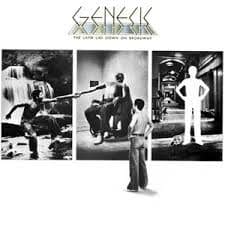
Did someone say shameless pretension? Put up the Bat Signal and call Peter Gabriel-era Genesis. The group achieved peak bonker-dom with this 1974 opus about a character named Rael who journeys to the underworld to rescue his brother and must battle split personalities and learn cosmic truths about good and evil. This is not to be confused with I Can’t Dance, their 1991 hit single with takes as its big concept the idea that Phil Collin’s isn’t all that amazing a dancer.
20. The Eagles, Desperado, 1973
Before becoming kingpins of Seventies soft rock, Eagles were a Southern California “supergroup” of sessions players desperate for attention. One of their early gambits was a concept record about the Old West, “easy money” and “faithless women”. True to its billing, Desperado opens with Doolin Dalton, named for outlaws Bill Doolin and Bill Dalton’s “Wild Bunch” of bank robbers.
The Wild Bunch are referenced again on 21 – the age of youngest gang member Emmett Dalton when he was shot 23 times but somehow survived a raid on Coffeyville, Kansas in 1892. Just so nobody missed the point, the band posed as cowboys for the cover. On the back, meanwhile, Eagles lie bound and “dead” on the ground, a recreation of the historical image of the capture of the Dalton Gang. Desperado was naturally recorded in the All-American environs of Island Studios in Notting Hill.
19. Bon Iver, For Emma, Forever Ago, 2007
The big idea behind Bon Iver’s debut was that Justin Vernon was so devastated by the end of a relationship that he could cope only though seeing out a harsh Wisconsin winter in a solitary log cabin. He emerged slightly bleary and possibly in need of a shower – but with a collection of songs that devastatingly tracked the death of a romance and his attempt to forge a new identity on his own. The unflinching manner in which he prods what remains of his broken heart elevates For Emma from mere break-up album to bells, gongs and whistles concept LP.
18. The Kinks, The Kinks Are The Village Green Preservation Society, 1968
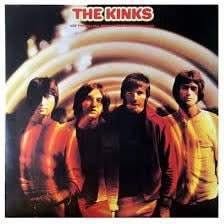
Notoriously a flop on release, Ray Davies’s nostalgic tour de force would become hugely influential decades later. It laid the emotional groundwork for Britpop, which drank deep of its bucolic vision of an England where it was always summer, the cider was sweet and overflowing, the banter cheeky and chirpy.
Davies had been inspired by a visit to Devon in 1966. He had been struck by the sense of calm and how at peace everyone seemed. He couldn’t help compare and contrast with his chaotic life in London and the pressures of fronting a major rock band.
As with every self-respecting concept album, Village Green Preservation Society is populated with outsized characters, including local ne’er do wells Johnny Thunder, married sweethearts Daisy and Walter and erm, prostitute Monica. “It’s all in my head, probably,” said Davies, who had started to tire of fame and its stresses. “Everybody’s got their own village green, somewhere you go to when the world gets too much.”
17. The Who, Tommy, 1969
Along with Pink Floyd’s The Wall, The Who’s opus helped catalyse the idea of what a concept record should be. It tells the story of deaf, dumb, blind boy who “sure plays a mean pinball”. Even on record it felt more like a movie than a collection of songs – and inevitably became a Ken Russell film in 1975.
Who guitarist Pete Townshend had been motivated to create Tommy after being introduced to the teachings of spiritual mentor Meher Baba. “It’s a story about a kid that's born deaf, dumb and blind and what happens to him throughout his life,” he told Rolling Stone in 1968. “But what it's really all about is the fact that ... he's seeing things basically as vibrations which we translate as music. That's really what we want to do: create this feeling that when you listen to the music you can actually become aware of the boy, and aware of what he is all about, because we are creating him as we play”.
16. Nick Cave and the Bad Seeds, Murder Ballads, 1996
The biggest commercial success of Nick Cave’s career up to that point, Murder Ballads is perhaps best remembered today for Old Nick’s duet with Kylie Minogue on Where The Wild Roses Grow. But beyond that top 20 hit and its accompanying video – where the perky star of Neighbours broadened her range by playing a battered corpse floating down down a river – Murder Ballads was bound together by the unifying themes of homicide, madness and mayhem. Cave, it is true, had been singing about homicide, madness and mayhem for years at that point. But this collection of traditional and original songs about murder added up to one of his most coherent and compelling forays.
15. Frank Sinatra, In The Wee Small Hours, 1955
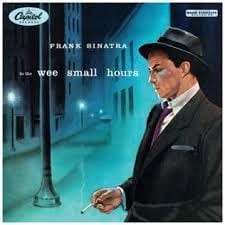
Sinatra’s ninth album dives deep into themes of loneliness, introspection, lost loves and closing time ennui. This is spelled out by the cover image of Sinatra looking moochy with a nighttime cityscape twinkling mournfully behind him. On songs such as Glad To Be Unhappy, When Your Lover Has Gone and Last Night When We Were Young Sinatra, 40, wrestles with the ebbing of his youth and the onset of his autumnal years. In The Wee Small Hours is the sound of the former teen idol reckoning with age and the changing of the seasons.
14. Pink Floyd, The Wall, 1979
The concept record to rule them all and also the project that caused the definitive Seventies line-up of the Floyd to come tumbling apart. There’s a central character “Pink”, modelled by Roger Waters both on himself and Pink Floyd’s acid casualty original frontman, Syd Barrett. It’s a album about isolation, paranoia and self-hate. As a rock star at the peak of his powers in the late Seventies, Waters would have been only too well versed in these subjects.
Ironically, this dense and often bleak LP also gave Pink Floyd a rare hit single, with Another Brick In The Wall, Part 2 topping the charts in both the UK and US. But the sheer effort required to get it across the line would lay bare the fault lines in the Floyd. The closing date of the Wall tour in 1981 would also be Waters’ final appearance with the group until their 2005 Live 8 reunion in Hyde Park, at which his erstwhile bandmates could barely bring themselves to make eye contact with him.
13. Nine Inch Nails, Year Zero, 2007
Having grown disillusioned with the music industry and nearly suffered a fatal drug overdose in London, Nine Inch Nails leader Trent Reznor returned from a hiatus with a multi-faceted goth-pop masterpiece.
The setting is a dystopian future America, where freedoms have been eroded, the surveillance state has its tentacles everywhere and the government has been taken over by a fundamentalist Christian theocracy. CD copies of Year Zero came in a “thermo-chrome heat-sensitive” disc which turned from black to white as it warmed up. In this condition it revealed a binary code that, once translated, contained the web address for a tie-in video game.
12. Daft Punk, Discovery, 2001
Often artists will shy away from the “C” word. Parisian house professors Daft Punk were, however, only too happy for their second record to be described as a concept album. Thomas Bangalter said the LP was rooted in the disco sounds of his and bandmate Guy-Manuel de Homem-Christo’s Seventies childhoods, in particular the Saturday mornings sci-fi cartoons on which they were raised. They later released a tie-in animated feature, Interstella: 5555, inspired, once again, by their love of Japanese anime.
11. My Chemical Romance, The Black Parade, 2006
With their glum expressions and black nail varnish, “emo” bands such as My Chemical Romance were often accused of an unhealthy obsession with death.
But Gerard Way and chums really were fixated on mortality on their grandiose third LP, in which they take on the alter-ego of the “Black Parade Band” and tell the story of a character called the Patient on a journey from the land of the living to the realm of the dead. The big idea was that death appears to each of us in the form of our fondest memory. For Way, that was a marching band he dimly recalled seeing as a child in New Jersey.
10. Billie Eilish, When We All Fall Asleep, Where Do We Go?, 2019
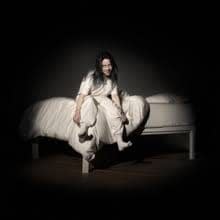
Eilish spent 2019 being feted as pop’s bright new thing. But she was a bright new thing with a dark halo, her debut album a sometimes unnerving inquiry into what goes on in our minds at night when the lights go out. As a conceptual opus, the LP reaches a crescendo on Bury A Friend – a song about the monster under the bed, sung from the monster’s perspective.
9. The Beatles, Sgt Pepper’s Lonely Hearts Club Band, 1967
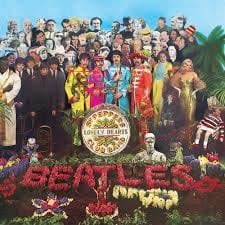
John Lennon was adamant Sgt Pepper wasn’t a concept record. But what did he know? He only wrote half the songs.
And besides, the album is undeniably bound together by an overarching big idea – of an old-fashioned music hall revue, hosted by the eponymous Sgt Pepper.
“ We're Sgt. Pepper's Lonely Hearts Club Band We hope you will enjoy the show,” sing the Beatles in the first song, which ends with McCartney introducing Ringo Starr’s alter ego, Billy Shears. Sgt Pepper from here segues into With A Little Help From My Friends, with Ringo/Shears on lead vocal
Sgt Pepper is back for the penultimate track, which reprises the opener. The vaudevillian imagery is further conjured with on Lennon’s Lucy In The Sky With Diamonds and the opening line, “picture yourself in a boat on a river”, and Being for the Benefit of Mr Kite, inspired by a 1843 circus poster discovered by Lennon in an antique shop in Kent.
Lucy in The Sky With Diamonds, especially, is identified by musicologist Tim Riley as the point on the record “[where] the material world is completely clouded in the mythical by both text and musical atmosphere”. Which is really just a clever way of saying… it’s a concept record (sorry John).
8. Sufjan Stevens, Carrie and Lowell, 2015

Alternative folkie Stevens had a fraught relationship with his mother Carrie, who left him when he was 12 months old. She struggled with depression, alcoholism and schizophrenia through her life. Stevens, raised by his father and step-mother, knew her largely as a stranger flitting in and out of his world
Her death in 2012 led him to re-examine his relationship with her and to confront the ghosts that had haunted him since childhood. From this, he distilled a stunning meditation on family and grief and how you can run and run but never escape where you come from and who you really are.
The emotional devastation reaches its apex on song Fourth of July, which revisits a deathbed conversation between Stevens and his mother. “Why do you cry…?” she wonders as the end looms. “We’re all gonna die.”
7. The Divine Comedy, Promenade, 1994
Neil Hannon’s third album as the Divine Comedy chronicles a day in the life of two young lovers, following their morning rituals (Bath), their adventures at the seaside, taking in lunch and a trip on a Ferris Wheel (A Seafood Song, Don’t Look Down). It culminates with Tonight We Fly and the couple staring at the sunset, watching the stars come out and wondering what it’s all really about. Think of it as Normal People: The Chamber Pop Years.
6. Rush, 2112, 1976
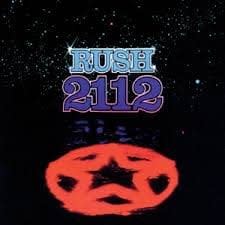
‘Concept albums’ to many people means a 50-50 mix of histrionic hard rock and sci-fi silliness. That was certainly the definition Toronto proggers Rush ran with on on their Ayn Rand-inspired masterpiece. The setting is the city of “Megadon”. The year, obviously, is 2112. Individualism has been outlawed with the population controlled by “a cabal of malevolent Priests who reside in the Temples of Syrinx”. The entirety of side one is devoted to the 20 minute title track, divided into movements such as Overture, Soliloquy and Grand Finale. If concept albums were allowed vote for their favourite concept album, this would be their top pick.
5. Arcade Fire, The Suburbs, 2010
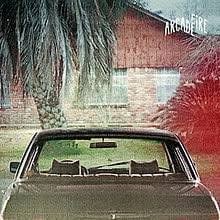
Win and Will Butler of the Arcade Fire grew up in a huge planned community in Houston, Texas, the children of a wealthy oil industry father. This opulent but somewhat ersatz setting dripped into the marrow of Arcade Fire’s third record, which sprawled like a huge housing development miles from anywhere interesting. It was, said Win, neither a love letter to, nor an indictment of, the suburbs – “it’s a letter from the suburbs”.
4. Neutral Milk Hotel, In An Airplane Over the Sea, 1998
Jeff Magnum had spent “about three days crying” before going into the studio to record Neutral Milk Hotel’s second and final album. He’d become obsessed with the Diary of Anne Frank and poured his emotional devastation into his songs. Lyrically, it is true that In An Airplane Over the Sea is deeply diffuse. However, it is generally accept that Frank’s fate at the hands of the Nazis is a major point of reference.
“The only girl I've ever loved / Was born with roses in her eyes,” Magnum sings on Holland, 1945. “But then they buried her alive / One evening in 1945.” Not recommended as background music for your Zoom drinks party this weekend.
3. The Magnetic Fields, 69 Love Songs, 1999
The concept is relatively straightforward. Stephin Merritt set himself the challenge of writing 69 songs about love in all its incarnations. Some of the tunes are slight – others are truly devastating. It’s also wonderfully obscure: the Death of Ferdinand de Saussure, for example, compares 19th century Swiss linguist and semiotician Ferdinand de Saussure with the classic Motown songwriting trio of Holland–Dozier–Holland. Somehow Merritt makes the contrast moving and profound.
2. Kendrick Lamar, To Pimp A Butterfly, 2015
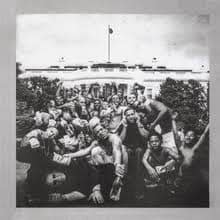
Lamar’s multi-layered masterpiece tracks the Compton rapper’s journey from his hardscrabble upbringing to the pinnacle of hip hop royalty. Along the way he explores African-American identity by blending jazz, funk, spoken word, rock and hip-hop. Lamar wonders, too, whether, even with fame and success, he can ever break free of America’s entrenched racial prejudices.
1. David Bowie, The Rise and Fall of Ziggy Stardust and the Spiders from Mars, 1972
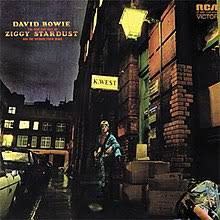
Rock’n roll was only a few decades old but already its mythology was ripe for plundering. That’s what Bowie did on a record about a fantasy rock band whose dandyish frontman soars too high and is burnt by the dark side of celebrity. Soon, Bowie would follow that trajectory as fame became too much and he ended up in Los Angeles in a state of coke-addled paranoia. Ziggy Stardust suggests that, even as he set out on that journey, he had an inkling where it would lead.

